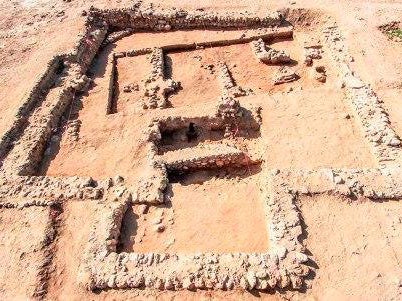Biblical city of Sodom 'found in Jordan'
Archaeologists have been excavating the ancient site of Tall el Hammam

Your support helps us to tell the story
From reproductive rights to climate change to Big Tech, The Independent is on the ground when the story is developing. Whether it's investigating the financials of Elon Musk's pro-Trump PAC or producing our latest documentary, 'The A Word', which shines a light on the American women fighting for reproductive rights, we know how important it is to parse out the facts from the messaging.
At such a critical moment in US history, we need reporters on the ground. Your donation allows us to keep sending journalists to speak to both sides of the story.
The Independent is trusted by Americans across the entire political spectrum. And unlike many other quality news outlets, we choose not to lock Americans out of our reporting and analysis with paywalls. We believe quality journalism should be available to everyone, paid for by those who can afford it.
Your support makes all the difference.Sodom, the ancient Biblical "city of sin", may have been discovered by a team of archaeologists working on a site in Jordan.
Dr Steven Collins, a professor of Biblical studies and apologetics at Trinity Southwest University, says that the "monstrous" Tall el-Hammam site in the southern Jordan Valley, which lies eight miles northeast of the Dead Sea, matches the descriptions of the Bronze Age city-state.
He told Popular Archaeology that it meets "every criterion" of Sodom - which, according to the Old Testament, was destroyed by fire and brimstone along with its neighbour, Gomorrah.
Mr Collins, who began working on it in 2005, said: "I concluded that if one wanted to find Sodom, then one should look for the largest city on the eastern Kikkar that existed during the Middle Bronze Age, the time of Abraham and Lot.
"When we explored the area, the choice of Tall el Hammam as the site of Sodom was virtually a no-brainer since it was at least five to 10 times larger than all the other Bronze Age sites in the entire region."
The site, which is believed to date back between 3500 and 1540 BC, is marked by a large mound that may have once been two cities - lower and upper - where the rich and elite lived, according to Sky News. Researchers have found defensive walls 10m high and 5m thick, gates, towers, plazas and ramparts, as well as a 'Red Palace' in the upper city.
"It was a huge undertaking, requiring millions of bricks and, obviously, large numbers of labourers," Mr Collins said. He added that the defensive structures - which appear to have been 30m high from the surrounding terrain - would have been used to protect wealthy residents and the king's palace.
Life in the city, the researchers said, looks to have come to a halt near the end of the Middle Bronze Age before being abandoned for 700 years.
Join our commenting forum
Join thought-provoking conversations, follow other Independent readers and see their replies
Comments